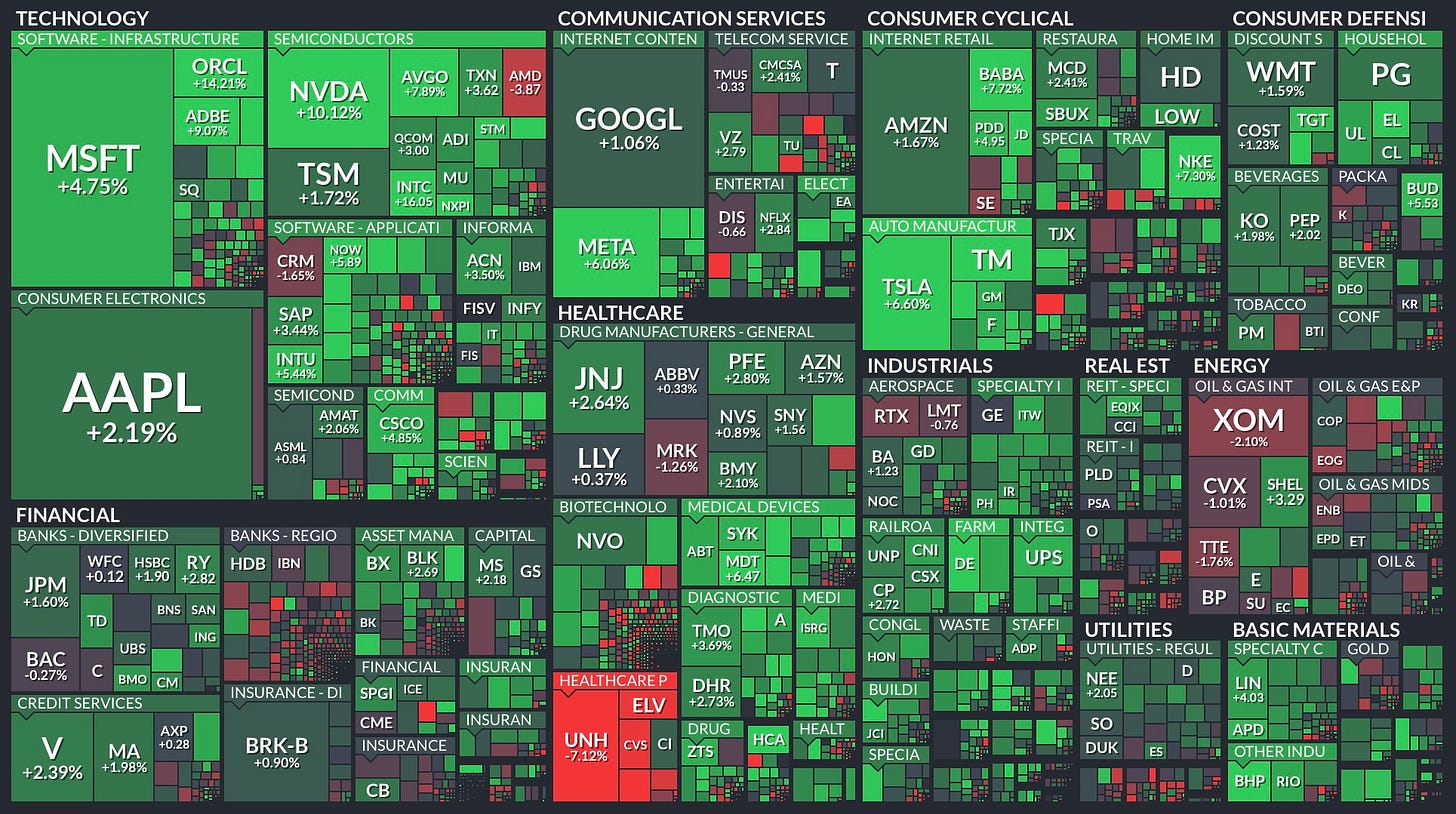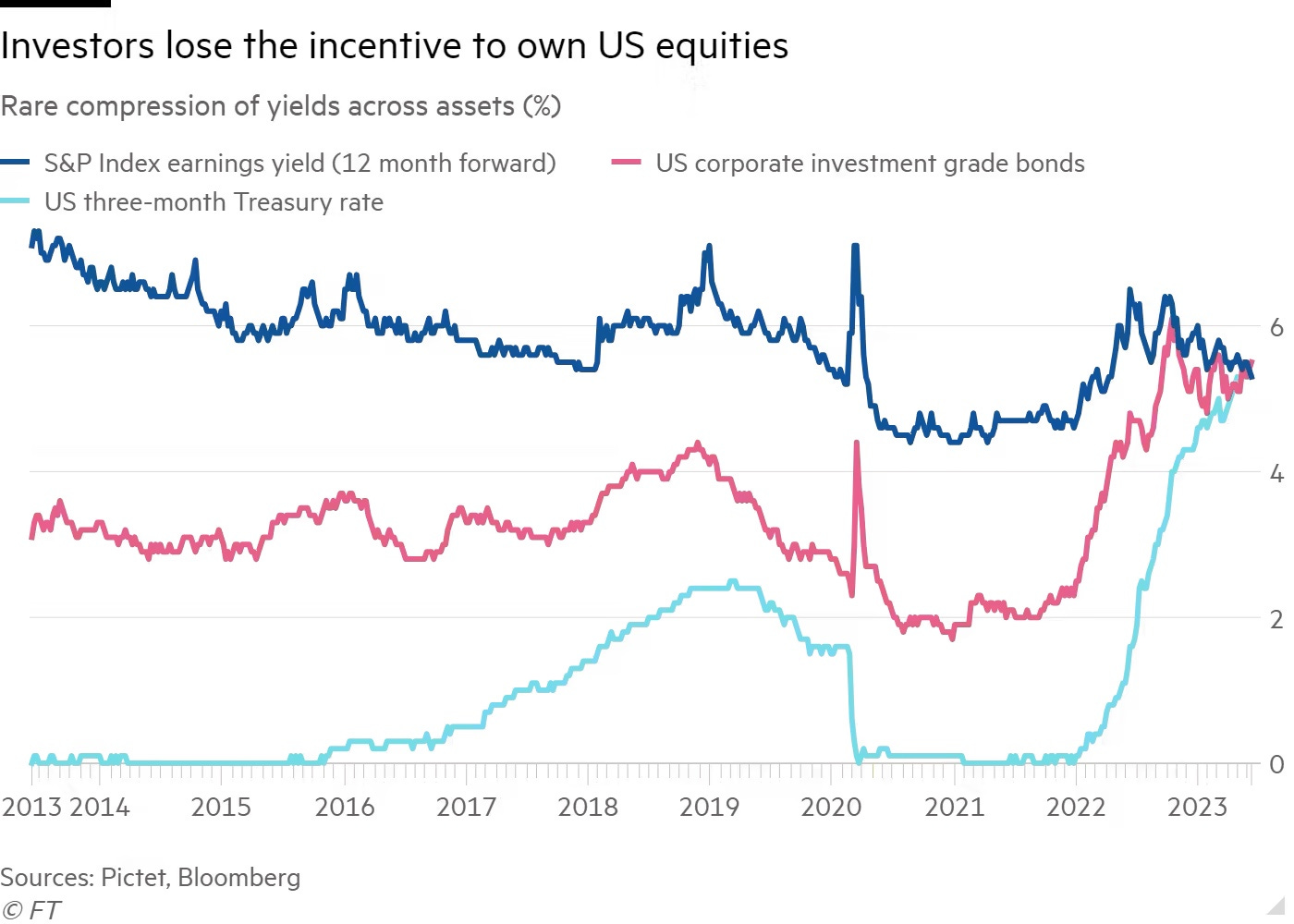📑 Research Notes for 2023-06-19
This week, we look at the Fed's hawkish pause, comparative asset class yields, and current developments in the U.S. agricultural sector.
We conduct extensive investment research and share the most interesting content that we come across every week. Here is a curated list of this week’s top observations.
Do not reply to this email with any service requests, contact us for support if needed.
Last Week’s Market Performance Heatmap
🔗 Source
Recent Pause in Interest Rate Hikes by US Federal Reserve Was Valid Decision.
The recent pause in interest rate hikes by the US Federal Reserve was a valid decision, according to Sandalwood Securities' David Kotok. He said the Fed had not guided the market well and had chosen not to surprise it. However, Kotok said the pause was not the end of the hiking cycle, and that the market was becoming more realistic about the Fed's outlook. He added that the Fed had every reason to continue to hike, and that core CPI was very sticky and following the trend of wages.
🔗 Source
Yields on Cash, Bonds and Equities Are The Same For The First Time Ever.
The yield on three-month US Treasury bills was 5.3 per cent this week after the Federal Reserve held interest rates at between 5 and 5.25 per cent, but signalled that most of its officials expected a further two rate rises this year. That is the same level as the expected 12-month forward earnings yield across the S&P 500, which has risen by more than 15 per cent since January. Although it is one of the best half-years for the index in two decades, it has left investors nervous about the potential for future returns.
🔗 Source
The Return of El Nino: Impacts on Global Economy and Climate Change.
The return of El Nino could lead to significant impacts on the global economy, particularly on commodities such as agriculture. This could result in inflationary pressure, adding to the existing inflationary pressure caused by the pandemic and the war in Ukraine. Higher temperatures associated with El Nino could also exacerbate climate change, leading to devastating consequences for vulnerable economies. The use of coal to fuel irrigation pipes for agriculture during hot events also contributes to greenhouse gas emissions.
🔗 Source
Drought in Central US Corn Belt Sparks Rally in Soybean Futures.
Drought is developing throughout the central US Corn Belt, with 57% of US corn areas and 51% of US soybean areas experiencing some degree of drought, according to the USDA. This has led to a rally in foreign and soybean futures traded on the CME Group, with traders focusing almost exclusively on weather. A wetter forecast could result in massive selling pressure, while a continuation of the dry pattern could result in further upside. Weather is typically the biggest driver of grain prices in a given year.
🔗 Source
Curated by Joseph Lu, CFA®
Joseph is the founder and managing director of Conscious Capital Advisors, and a CFA® Charterholder.
🔗 Connect with us on LinkedIn or Twitter.
Have a question about what we shared? Email us at info@consciouscapital.pro.
Do not reply to this email with any service requests, contact us for support if needed.
The information presented in this newsletter is for educational purposes only and is not a solicitation or recommendation for any specific security, product, service, or investment strategy.
Investments involve risk and unless otherwise stated, are not guaranteed. Be sure to consult with a qualified financial advisor, tax professional, or attorney before implementing any strategy or recommendation you may read here.






